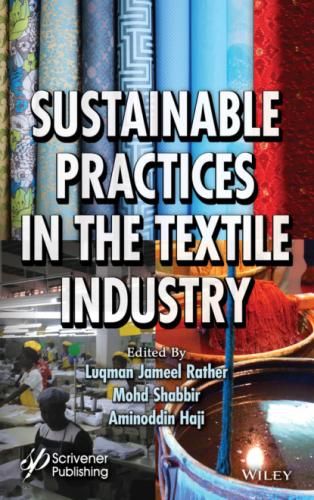7 Part 3: SUSTAINABLE WASTEWATER REMEDIATION 10 Sustainable Application of Ionic Flocculation Method for Textile Effluent Treatment 10.1 Introduction 10.2 Conventional Methods for Degradation of Textile Effluents 10.3 Surfactants 10.4 Adsorptive Micellar Flocculation (AMF) 10.5 Mechanism 10.6 Choice of Flocculant 10.7 Analysis and Calculations 10.8 Optimization of Conditions for Better Removal of Dye Using AMF 10.9 Potential Advantages of AMF 10.10 Application to Wastewaters 10.11 Conclusion 10.12 Future Prospective References 11 Remediation of Textile Wastewater by Ozonation 11.1 Introduction 11.2 Sources of Wastewater 11.3 Ozonation Remediation for Textile Water 11.4 Impact of Various Techniques in Combination Ozonation Process for Treatment of Textile Wastewater 11.5 Degradation of Dyes via Ozonation 11.6 Conclusion References 12 Design of a New Cold Atmospheric Plasma Reactor Based on Dielelectric Barrier Discharge for the Treatment and Recovery of Textile Dyeing Wastewater: Profoks/CAP Reactor 12.1 Introduction 12.2 Advanced Oxidation Processes (AOP) in Wastewater Treatment 12.3 Profoks/CAP Wastewater Treatment and Water Recovery System 12.4 Conclusion References 13 Nanotechnology and its Application in Wastewater Treatment 13.1 Introduction 13.2 Nanotechnology 13.3 Conclusion References
8 Index
List of Illustrations
1 Chapter 1Figure 1.1 Schematic representation of applications of natural dyes.Figure 1.2 Sources of natural dyes.Figure 1.3 Classification of natural dyes.
2 Chapter 2Figure 2.1 Schematic diagram of the supercritical CO2 apparatus equipped.Figure 2.2 SEM photographs, (a): undyed fabric, (b & c): cotton fabric dyed with...Figure 2.3 The mechanism of the reaction between reactive disperse dyes and cell...Figure
